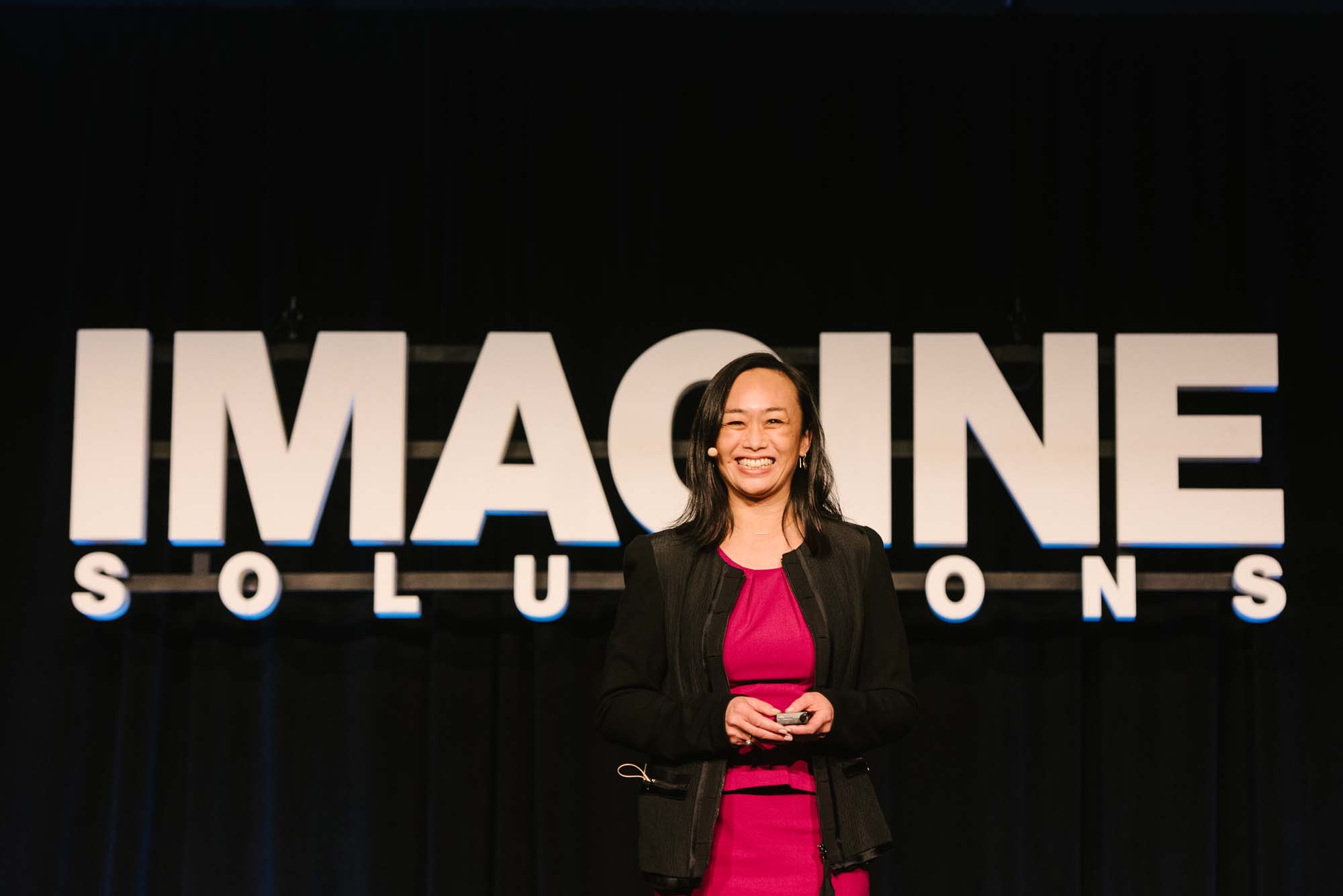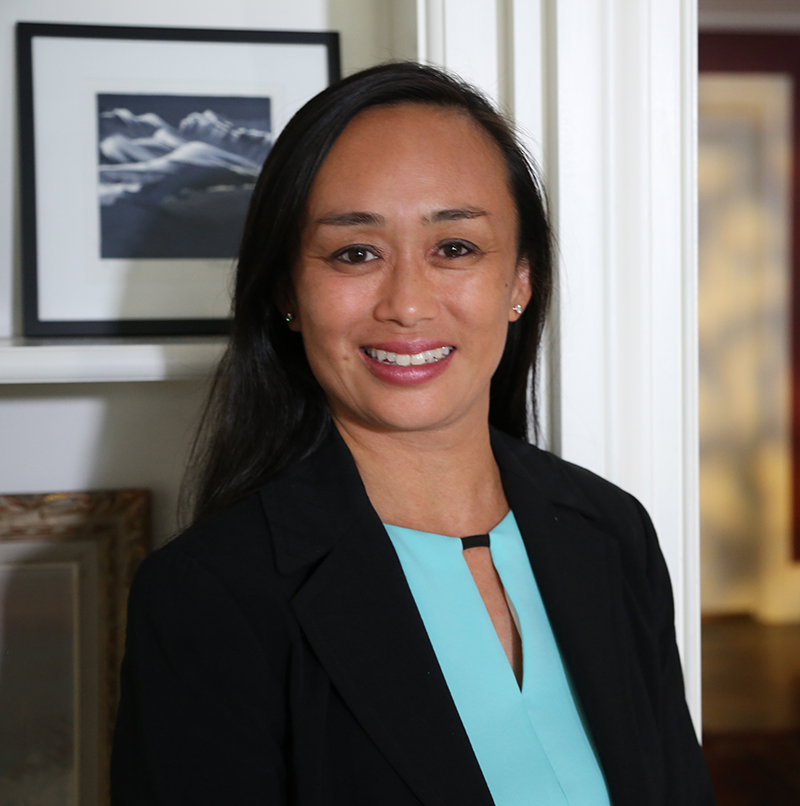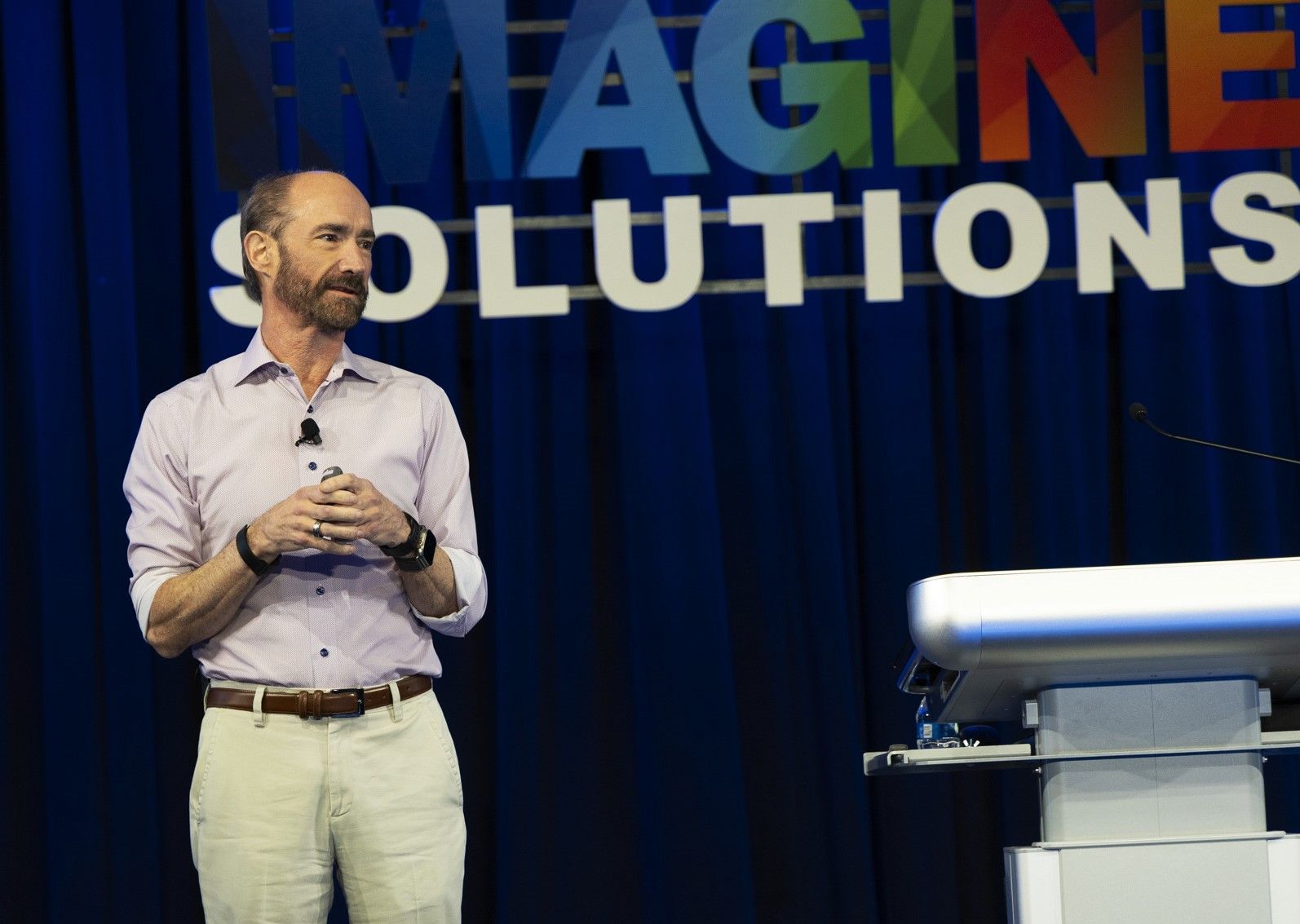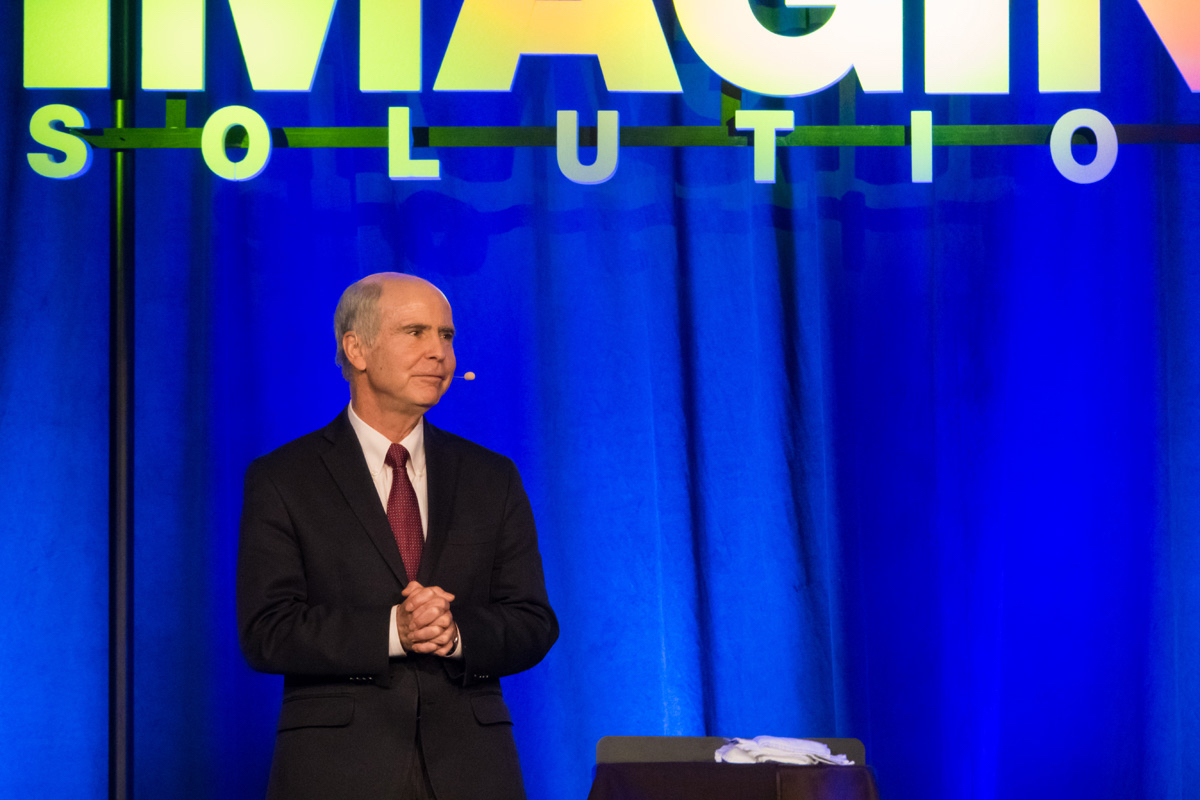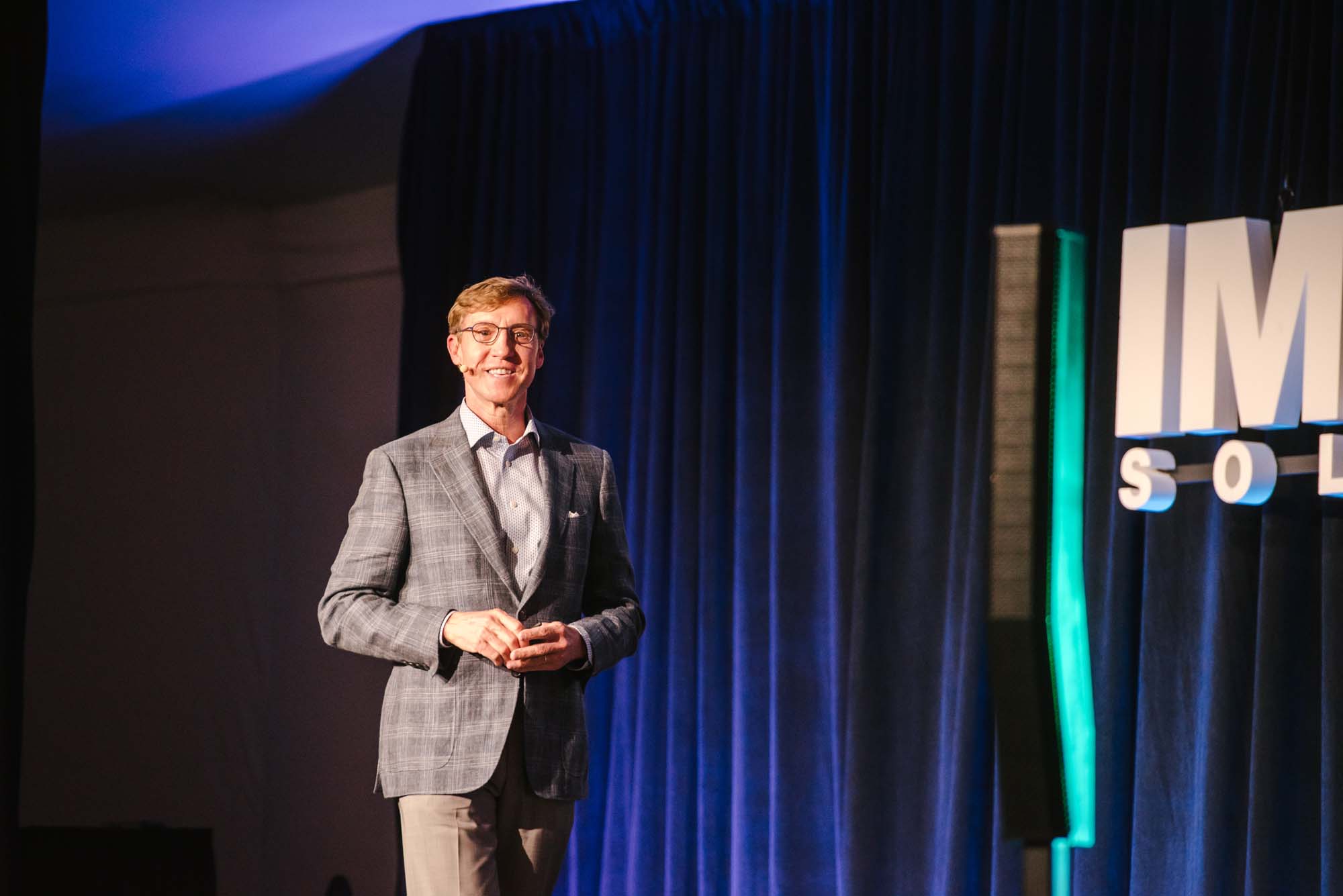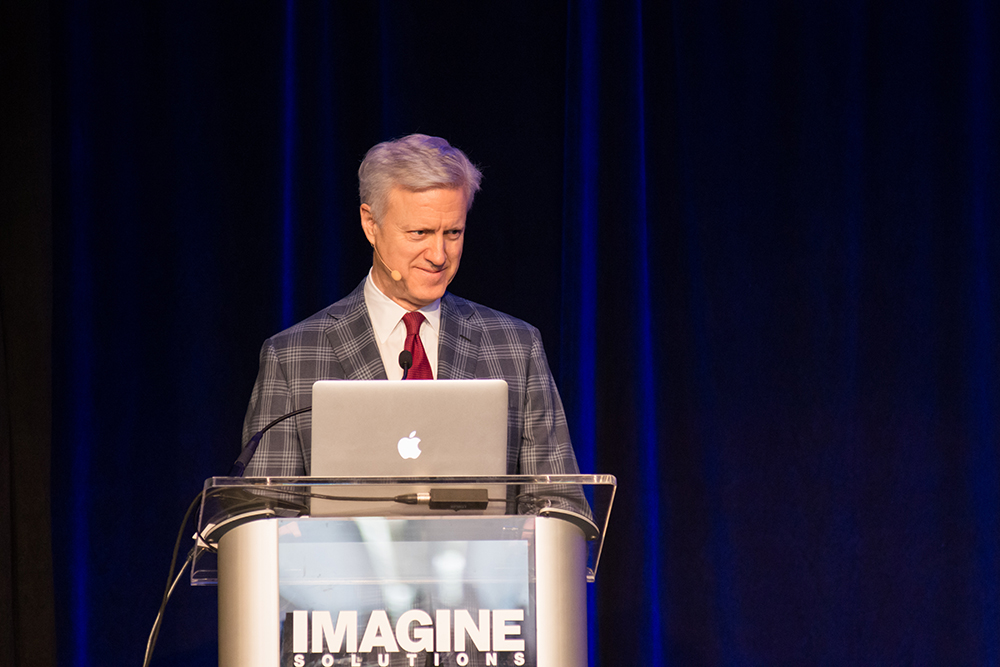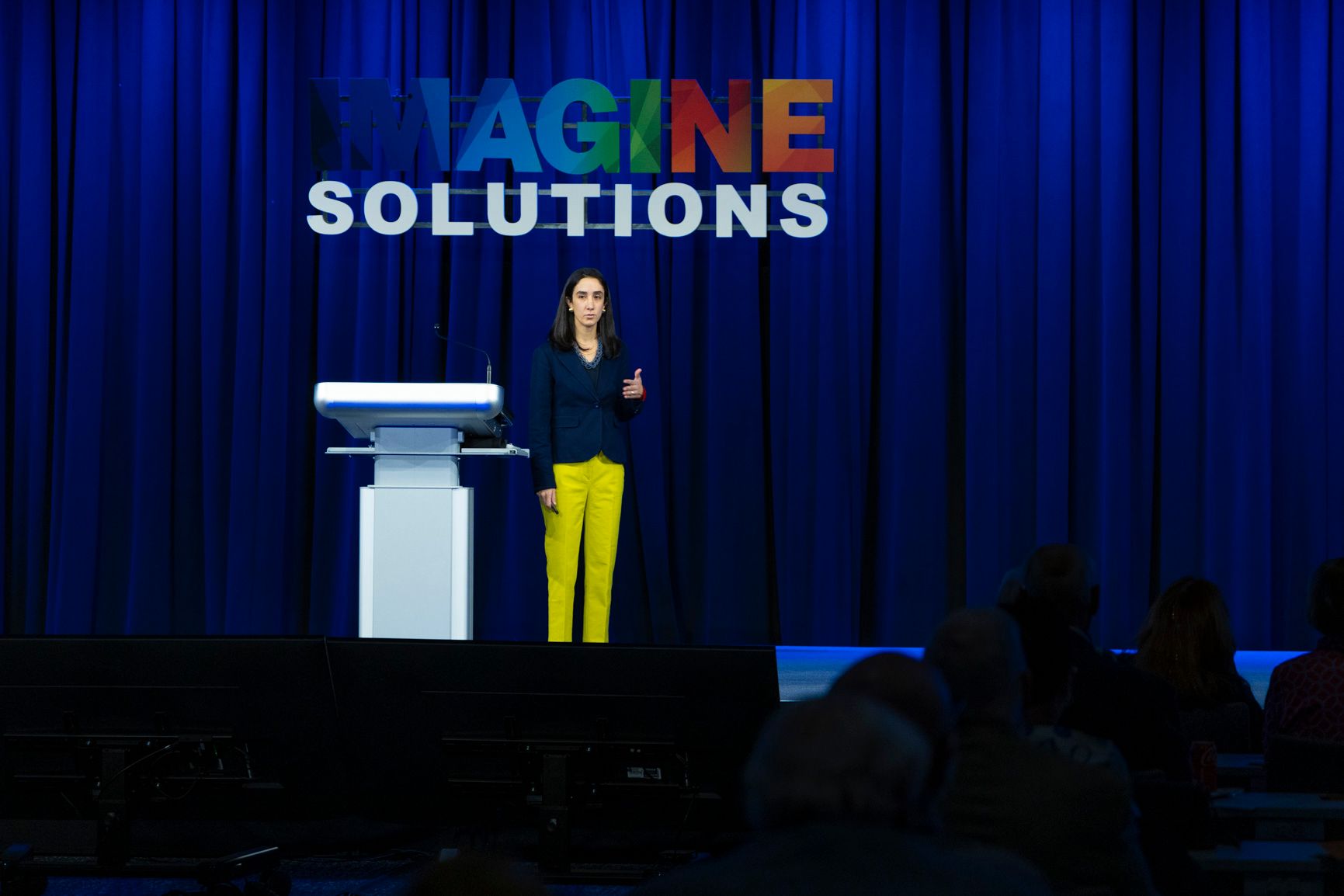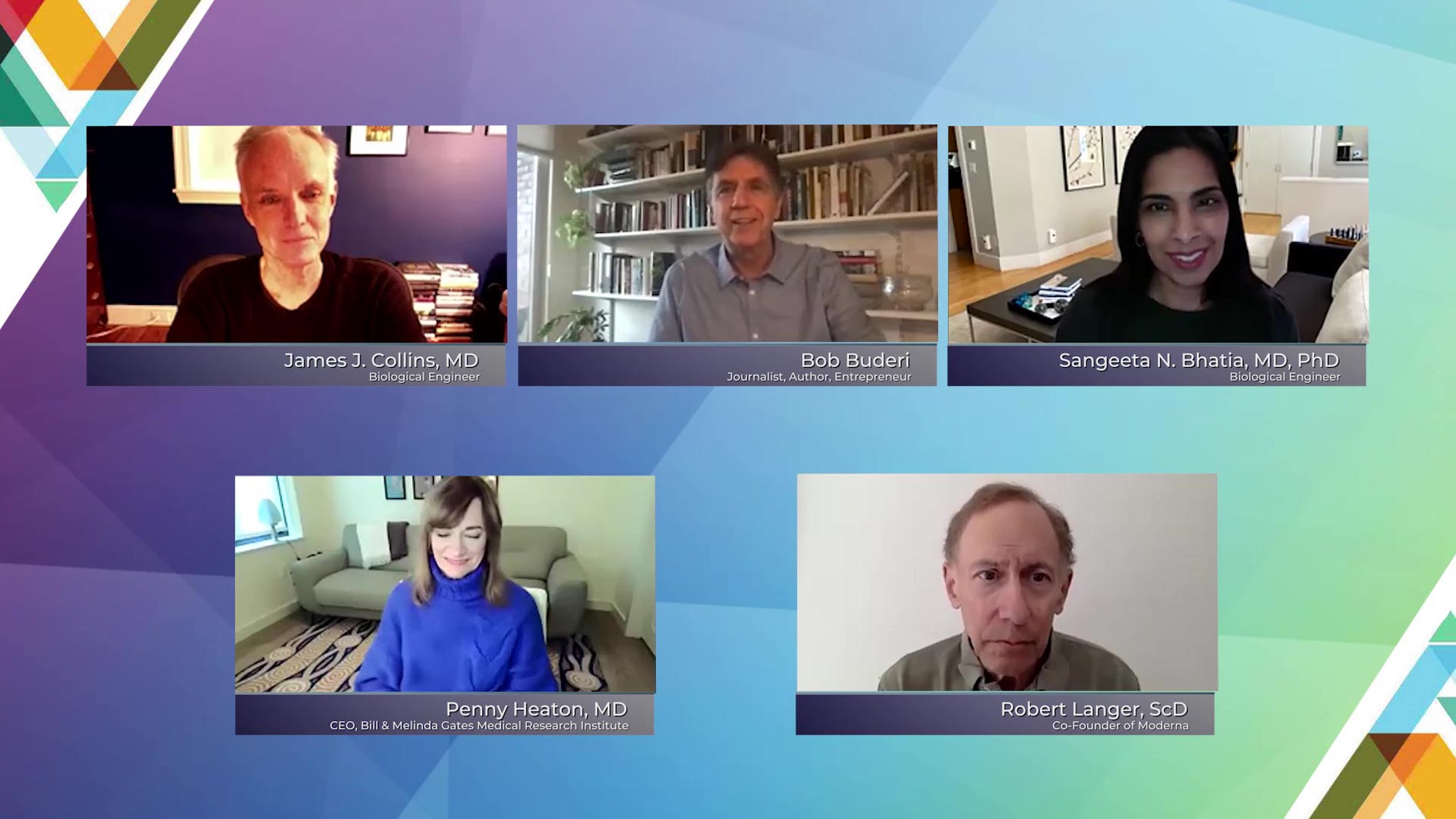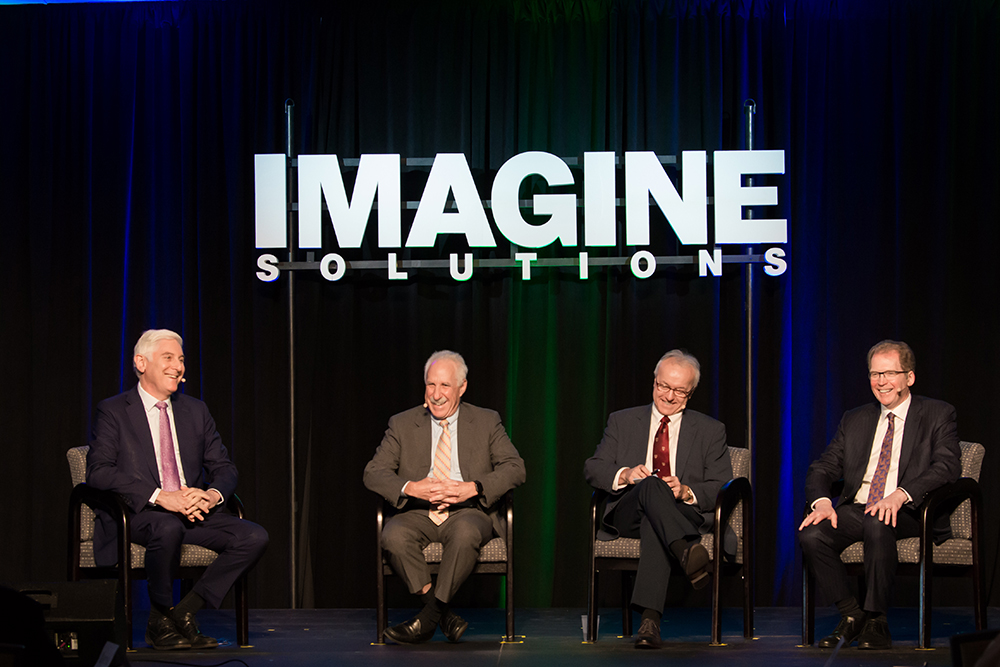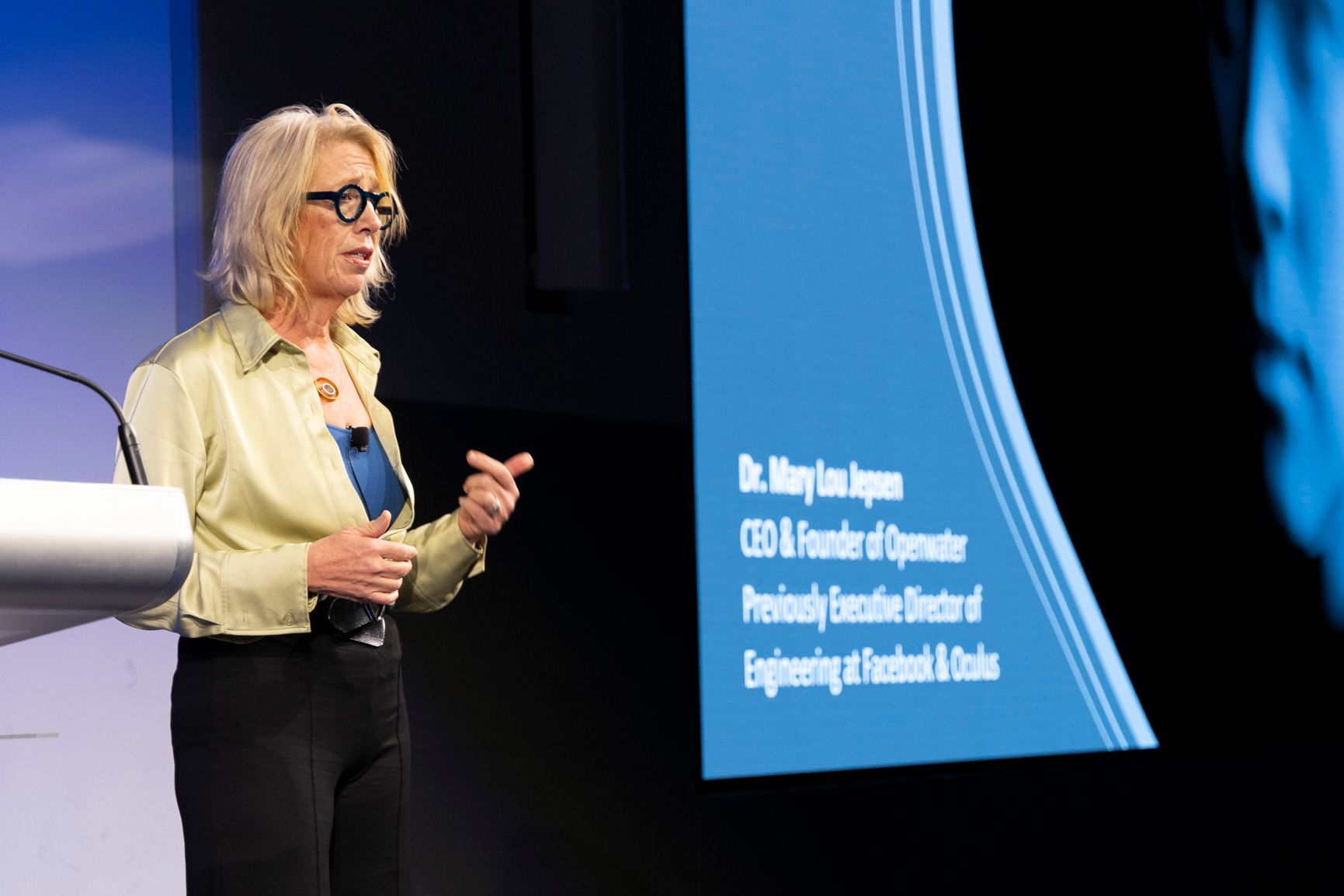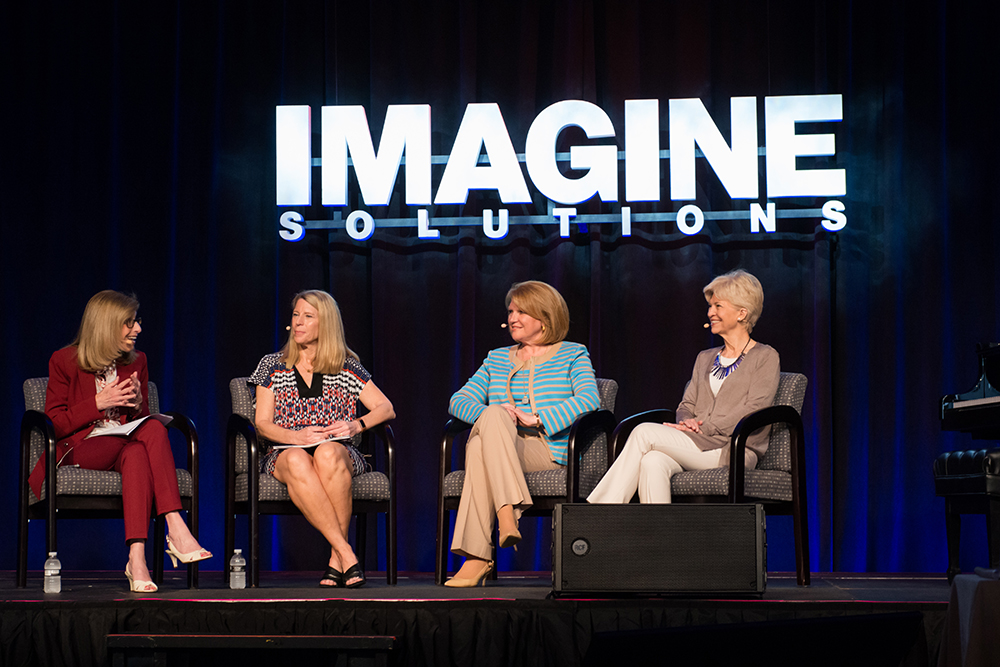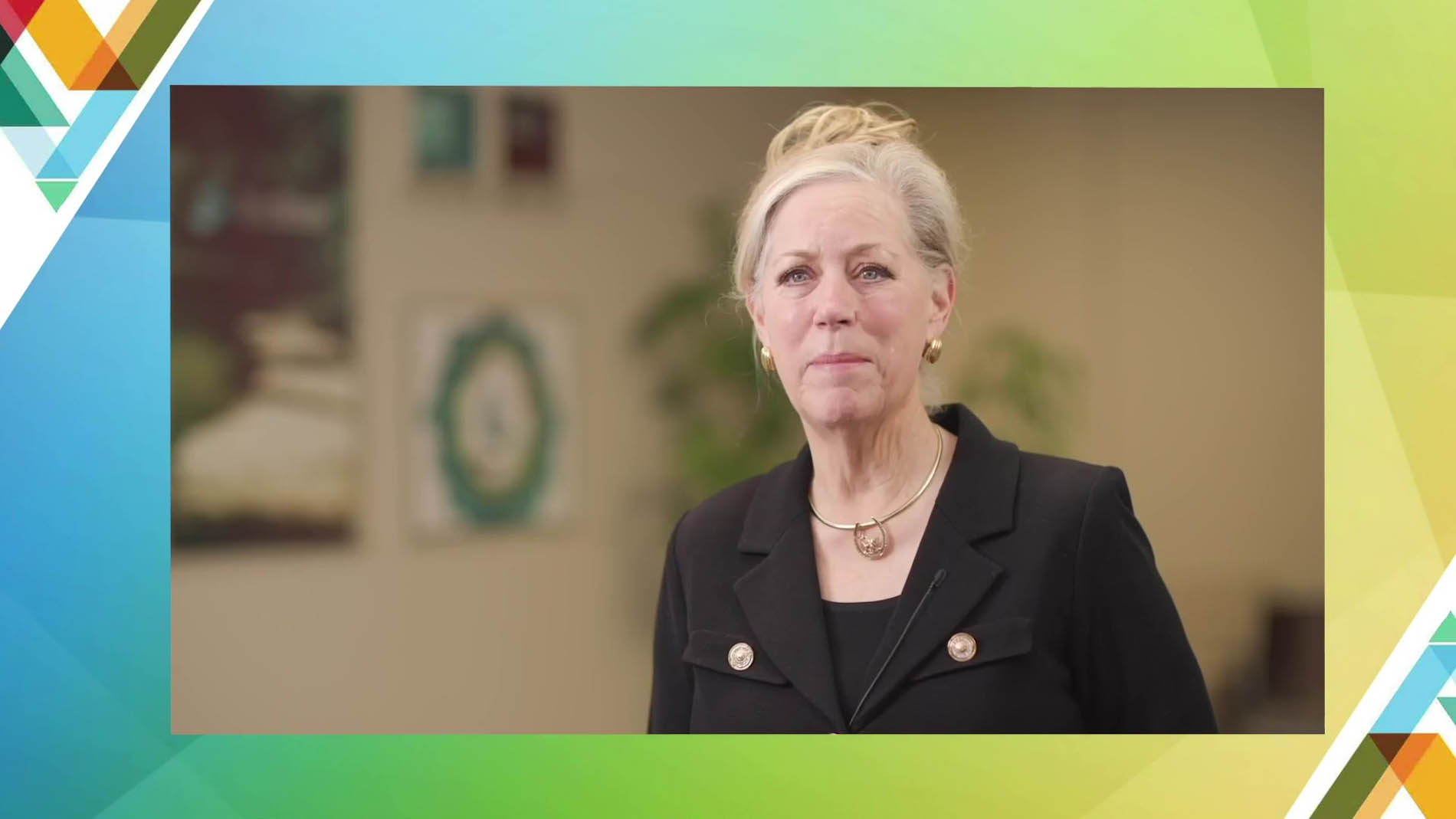High Risk – High Reward Approach to Tackling Cancer
Damon Runyon Cancer Research Foundation, believes that only by pursuing and investing in the most audacious and ambitious ideas will we achieve victory over humankind’s deadliest enemy.
Their research focus is singular: high-risk, high-reward. Yung tells her role in fostering new generations of scientists by funding research for future cancer breakthroughs.Since their founding in 1946, promising scientists identified and supported by Damon Runyon have gone on to make breakthrough discoveries that have transformed our understanding of cancer and develop new approaches to prevention, diagnosis and treatment of all forms of this disease. Twelve Damon Runyon scientists have received the Nobel Prize.
00.00
please welcome to the stage the president and CEO of the Damon Runyon Cancer Research Foundation youngly hi everyone so it is such a huge honor and pleasure to be able to be here on this stage with the incredible speakers that have been up here before me I want to start by thanking the organizers and especially Randi for giving me this opportunity to speak to all of you today so again my name is Yong Lee I'm the president and CEO of the Damon Runyon Cancer Research Foundation I'm a scientist by training and I'm also a former Damon Runyon fellow so it's truly a privilege to be leading this organization now and today I'm excited to be able to tell you about our philosophy and our strategy for funding brave and bold so in this room we have 600 people and I think that it's safe to
01.03
say that each and every one of us has been touched by cancer in some way if not personally then we no family or friends who have been affected by cancer and so it's incredibly important for us to continue to dedicate efforts toward cancer research the odds are truly against us one in every two men and one in every three women will be diagnosed with cancer at some point in their lifetimes and so the good news is that there's been a lot of progress over the years um just this year actually the newest statistics were released and we've seen that there's been a 29 percent decrease in cancer death rates from 1991 to 2017 so that's extraordinary progress and this has led to many lives saved so today in this country alone there at an estimated 16 point nine million cancer survivors so that's pretty extraordinary progress
02.00
thank you and we're very proud to say that the discoveries that many of the scientists that we funded are behind much of this progress but what it comes down to is that there's still work to be done we want to get to a point where we have 100% survival so we've seen this significant advance in cancer survival rates from the 1970s when it was under 50 50 percent to 67 percent now again we need to do more and what are what we would like to do is to understand cancer better and to turn it into a treatable disease rather than a death sentence but it's very challenging as you may know cancer is comprised of over 200 different diseases cancer affects many different tissues in the body but each individual person's cancer is different from the next and what we know now due to the vast amounts of
03.02
research that have been done is that you can't categorize cancer by the place in which the body has been affected so one person's lung cancer may be more similar to another person's breast cancer than it is to another lung cancer also we know that cancer is incredibly complex you don't need to look at any of the details on this slide except it's just meant to illustrate that there are so many different changes that can happen at the cellular level that can lead to processes in the cell going awry which leads to cancers growing out of two cells excuse me growing out of control and becoming cancers we know now through the research that's been done and that we can target and treat some of these these changes that occur in the cell but again there's much more work to be done so we would like to see more and more research so that we can better understand the changes that are
04.00
occurring in a cell and better be able to target them in each individual patient so that we can treat cancer more effectively but here's the problem the u.s. funding model is broken when you look at this this chart shows the age at which most Nobel prize-winning discoveries were made and what you'll see on the left-hand side of this curve is that the majority of these discoveries are made by young people before or the age of 40 however when you look at when most scientists receive their first independent source of funding their first grant from the National Institute of Health they don't get their first grant until after the age of 42 so what's happening then if these young scientists don't have resources to pursue these big ideas earlier in their career then we may be losing opportunities to make discoveries and advances in cancer what we also know is that the federal research funding
05.01
landscape is incredibly conservative and safe so it supports primarily very safe incremental science so you'll see that less than 1% of the NIH budget is dedicated to fund high-risk research and again if we want to make more progress against cancer and have more breakthroughs we think it's incredibly important to take some risk so that's where Damon Runyon comes in so we fund high-risk high-reward research and what we do is we identify and enable young scientists who are brilliant brave and bold enough to go where others haven't these are people who are unafraid of challenging convention pursuing big ideas and they're not afraid of failing we support these scientists at early points in their careers and we provide them with the critical resources that they need to pursue their revolutionary ideas and all right our goal is breakthroughs so how
06.02
do we do this in part it's due to the amazing leadership that we have within the scientific community and so here on the next slide you'll see dr. bill Kalin he's up at Dana Farber Cancer Institute in Boston I know we have a lot of Boston and folks in the room here and Bill received the Nobel Prize last year for his incredible work that he did to understand how cells sense oxygen bill is also the vice-chair of our scientific committee of the Board of Directors and he works with us to drive and direct the strategy of our award programs he's also the chair of one of our scientific programs that specifically funds physician scientists so in bills words when funding gets tight people tend to become very risk-averse and they do the kind of science that isn't going to create new paradigms and fundamentally change the way people
07.00
think more like laying bricks as opposed to stepping back and saying do we need to look at this problem in a wholly different way I very much endorse our philosophy of funding brave and bold finding people who might see something that others have missed not everything's going to succeed but when you do succeed the payoff is just tremendous so again our strategy is to create award programs that are targeted to have the greatest impact on cancer research we foster new generations of elite scientists and fill gaps in traditional research funding that threatened future breakthroughs one of the things that we do is to fund scientists that are working on all cancers so rather than focusing on one particular type of cancer we have scientists that are working on understanding the fundamental changes that are taking place in a Cell and this has the potential to impact
08.00
many different types of cancers they conduct high-risk high-reward research and we encourage this we won't fund people to do safe science but rather we want them to take risks be bold and not be afraid to fail in fact we're okay with them failing because it means that they're pursuing new ideas and they work across the spectrum from very basic discovery research which might be focused on cellular mechanisms and changes that are taking place in the cell and all the way through to work that's more translational that has the opportunity to be moved directly into the clinic and into patients so we fund quite a lot of basic researchers who have PhDs in very specific fields and then we also fund physician scientists who are trained in the clinic but also are are able to do research and so they take their observations from the patients that they see in the clinic into the lab this
09.01
drives their research questions and then they can take those findings and move them back into the patient and improve patient care so in short we fund revolutionaries they just happen to work in labs this is one of our actual scientists who works at Mount Sinai in New York so I wanted to give you the opportunity to hear directly from one of our scientists this is Jesse Brown she's the Damon Runyon Zone pediatric cancer fellow at Columbia University mission to fund bold and brave research is a really great one because I think a lot of the times when we're writing our grant proposals we try to write something safe and that like will probably work it's maybe not the most exciting work but Damon Ryan really encourages to write like that big like moonshot project that is really it might be really high risk but high risk means high reward and can really mean big
10.01
steps in advancing cancer research and advancing therapeutics and how we learn about how cancer works I think it's always a great time to fund young scientists and fund research and from basic to more translational research because I think things that that we find in the basic sciences are just as important and applicable to like what we can then learn later on and use in the tools that we can all use together to kind of come at this very complicated very smart disease that seems to get at us at every term but I think that we're really coming at it from a lot of different angles now and are really starting to get a handle on what the best types of therapies and treatment approaches that that we should be striving for in cancer research
11.01
so we have a number of scientific committees that are comprised of leaders in their field people like dr. bill Kalin and recent Nobel laureate and they work with us and they volunteer their time to select this next generation of leaders so the pool of eligible scientists out there is quite large but what we're looking for is people who are highly qualified and then within that group we select only the very best of the best and so fewer than 10% of the people that apply to Damon Runyon will receive actual grants so we set the bar really high our investment in the next generation of leaders this year alone will be twenty million dollars and over the country we're funding over 200 scientists so people like Jesse who are pursuing all different types of research projects and really dedicating their efforts to make progress against cancer our organization has been around since 1946 and in that time we have funded
12.03
over 375 million to cancer research and over 3,700 50 scientists so as you can imagine this creates this extraordinary community of brilliant minds who are all focused on important questions in cancer and you'll see that there's been this sort of recognition from the scientific community within the community of Damon Runyon scientists over these past 73 years we've been able to include 12 Nobel laureates which is quite extraordinary they've also been recognized with many other awards as you can see on this slide that show recognition from the scientific community for the extraordinary work that they have done shown here is one of our Nobel laureates dr. Jim Rothman who's at Yale University and he says he remembers his Damon Runyon award when he was a postdoctoral fellow and he says that I was so fortunate to start out at
13.01
a time when it was possible for a young scientist to have an idea take a risk and to seem to do the impossible so shown here are just a few of the important discoveries that Damon Runyon scientists have made they were first to cure a solid tumor with chemotherapy one of our scientists actually established the connection and link between smoking and lung cancer one of our scientists discovered bracket1 a breast cancer gene and was the first to cure a patient exclusively with chemotherapy but impact is measured in breakthroughs and lives saved so so shown here are a number of our scientists and and I'm going to just walk through some of the things that these scientists have been able to accomplish as an example of what our scientists have contributed to the field so the first example is dr. Jed wall
14.01
wall chalk on your on the left and he has been an extraordinary leader in the field of immunotherapy I think you've probably all read examples about immunotherapy and this has been something that the whole medical community has been incredibly excited about because what we have seen is that new approaches that essentially harness the body's own immune system to be able to now target and attack the cancer cells within each individual patient's body we have new therapies that enable this now and so Jed actually led the the pivotal clinical trials that led to the approval of a drug called year voi it is in the class of immunotherapy called checkpoint inhibitors and essentially this is something that releases the brakes that are on in the immune system typically and allows cancer to hide from the immune system and not be not be attacked in this drug now has led to
15.00
live many many lives saved in particular its approval initially was for patients with metastatic melanoma for whom their disease was truly a death sentence there had not been any new treatments for metastatic metastatic melanoma patients for several decades and now there are patients who are in full remission and surviving so this is quite extraordinary and we're so excited about this advance next I'm going to tell you about Christine lovely doctor lovely is a lung oncologist so her work is focused on developing new targeted therapies and these are therapies that are focused on identifying on on targeting the specific genetic alterations that take place in certain cancer cells in her work led to the approval of a drug called Xalkori which is one that has been highly effective for certain types of lung cancers that
16.01
have alterations in two genes called ALK one and ros1 and again for these patients it's led to extraordinary responses next i want to tell you about dr. moura Gillison so her work is really special because she's an epidemiologist so it means that she looked back at the many many patients that had human papilloma virus and so she has established the link between the human papillomavirus or HPV which I think many of you probably recognize is involved in causing a cervical cancer dr. Gilson learned through her studies that it also causes certain head and neck cancers so what this has meant is that we know now that patients who have HPV positive heading next cancers will respond differently to therapy than those that are HPV negative and the even better
17.02
news is that at the time that she was doing this work there were vaccines and development against HPV primarily for prevention of cervical cancer but now that we know that HPV vaccines will prevent not only cervical cancers but entire classes of head and neck cancers and so children now and adolescents are under recommendations to receive the HPV vaccination and this means that we can eliminate an entire class of cancers so this is extraordinary progress as well lastly I want to tell you about dr. Fung Zhang and you heard from Daniel craft this morning about CRISPR a little bit and CRISPR is a fascinating discovery so on the basic science side where we had scientists that were working on trying to understand this bacterial process that turns out to be able to edit the genome so imagine that we can now use
18.02
CRISPR to correct mutations that might be in a person's body that are taking plate that are leading to disease and as Daniel mentioned it's now being applied to diseases such as sickle cell anemia in patients today and it's currently in clinical trials and we're very hopeful that this will also lead to new treatments for cancers and in my last minute or so I'd like to give you the opportunity to hear from another one of our scientists this is Lexi von desmond and she is a Damon Runyon fellow at the University of Utah if they're safe you kind of know what the answers are gonna be and if you know what the answers are gonna be that's not really much of a question now is it but if you're asking something where you have no idea what the answer could even be or necessarily even what the question is that's a lot of possibilities so as young scientists
19.02
being told that hey you can actually just pursue something because it's interesting if you don't know where it's gonna go that's the sort of thing that helps you find things like CRISPR working on some random bacterial system that you could never tie back to human biology and now maybe we can you know edit human genes permanently there's something in that I think you know you have to be young and a little crazy and given enough resources enough of a push to actually go for it where that's kind of special so I hope I've been able to convince you today that our approach our unconventional approach is going to lead to new breakthroughs and advances in cancer I'd like to close by showing a picture of our namesake this is Damon Runyon on the left hand side with his very good friend Walter Winchell so Damon Runyon was a journalist and wrote many short stories that were quite iconic about New York and many of you might remember him
20.02
as a writer Damon Runyon also smoked every single day of his life and as a result died of throat cancer he was very good friends with Walter Winchell who was a radio personality at the time and Walter Winchell got on the radio after his good friend Damon Runyon passed away of throat cancer got on the radio and put out a call to the men and women of America to give their spare change to support cancer research and so here we are today Damon Damon Runyon and Walter Winchell I think would be quite proud of what we've been able to accomplish today and one of our unique ties back to Broadway and Damon Runyon is the fact that we actually still have relationships with Broadway theaters and so we have a Broadway ticket service that actually fund some of our administrative expenses so we are very excited to continue their legacy and
21.01
with that I would like to say thank you on behalf of some of our scientists that are being funded today thank you for your attention thank you so much thank you thank you very much

